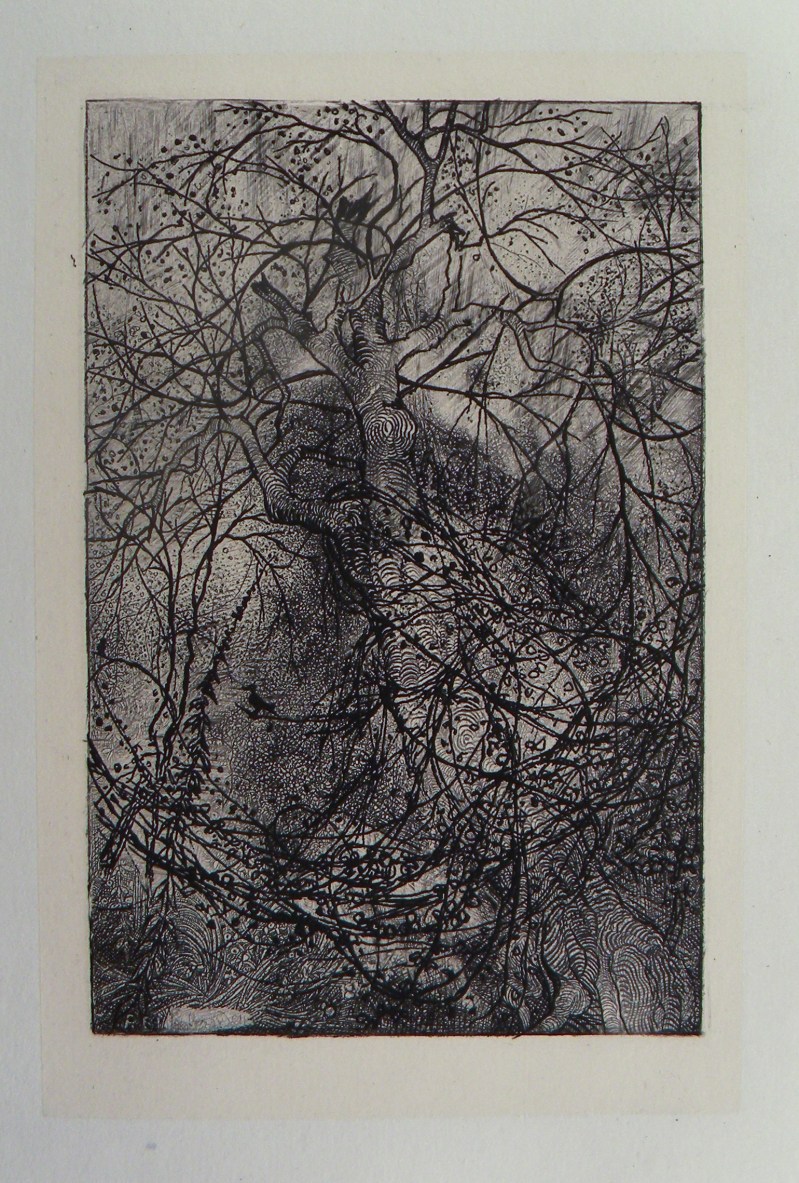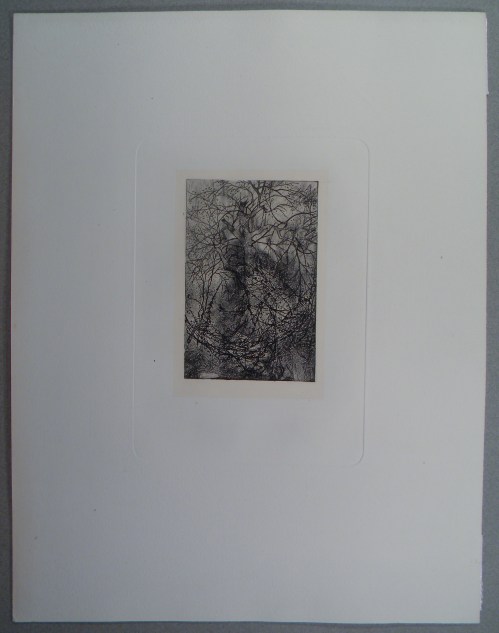Rodolphe BRESDIN: Branchages - c. 1880
SOLD
[Branches]
Etching, 105 x 70 mm (image), 172 x 123 mm (to the platemark). Van Gelder 146, Préaud 110, 1st state (of 2) before reduction of the plate. According to Van Gelder, all impressions taken from this plate are posthumous.
Very fine impression on cream chine appliqué on heavy wove paper. Very good condition. All margins (352 x 252 mm).
Provenance: H. M. Petiet (his blindstamp on the back, Lugt: not described).
This proof belongs to the first run of 50 prints made from the uncut plate, printed on cream chine appliqué or on Arches wove paper and reserved for the luxury copies of a biography of Bresdin by Louis Godefroy and Marius-Ary Leblond, titled La vie nomade de Rodolphe Bresdin. This book was never actually released (the manuscript is in the collection of the Bibliothèque nationale de France, Département des estampes) and the impressions were bought at a later date by H. M. Petiet. Dirk Van Gelder ordered a run of 125 prints on chine appliqué on wove paper, made from the reduced and steel-faced plate for the first copies of his catalog (D. van Gelder, Rodolphe Bresdin, vol. II: Catalogue raisonné de l’œuvre gravé, La Haye, 1976).
In their unpublished biography of Bresdin, L. Godefroy and M.-A. Leblond quote the words of his daughter Rodolphine, which give special resonance to this unconventional etching: "My father would spend hours examining from below the leaves, the branches, the twigs, the very texture, the tassels and laces of a bush . He would fly into a sudden rage and exclaim “Even the greatest artist is incapable of rendering this! It is beyond us.” (...) He would spend hours in our garden, studying the work of spiders weaving their web" (pp. 78-79). Yet Branchages looks like no other work by Bresdin, not even Éclaircie en forêt (VG 147), in which the thick vegetation of a luxuriant and dark forest seen from below opens up a vista to the sky in its center, resembling the aperture of a camera. In Branchages, there is no center but the perspective of a bare tree, also seen from below, through a whirling screen of thin branches and twigs, muddling the image of the trunk and the main branches, which are twisted or mutilated. The strong roots of the tree and the grass, visible at the bottom of the image, suggest that the spectator stands below, at the foot of the tree or is lying on their back.
The composition of this almost experimental work is not only unique among the works of Bresdin but doesn't have any contemporary equivalent. Furthermore, we don't exactly know when Bresdin etched Branchages, which wasn't published during his lifetime. In the catalog of the exhibition at the Bibliothèque nationale in 1963, it is dated to 1858 (no. 21). Van Gelder thinks it more probable that Bresdin etched it circa 1880. The motion in the swirling network of tangled black lines over a pale background with dark areas evokes for us today some paintings or inks by Pollock or even the spidery gossamer in the etching Untitled 11 (Moma 192.1977), which is only slightly larger than the etching Branchages. But these comparisons are solely visual and have no real value in criticism. Branchages remains the singular work of an artist who won't be pigeonholed. It was exhibited as part of the two hundred masterpieces in the international exhibition Cinq siècles de gravure européenne (Meesterwerken van de Europese prentkunst, 1410-1914) held in 1966 in Munich, Paris and Amsterdam (cat. Amsterdam no. 166, p. 224) » (Van Gelder, vol. II, p. 144).




